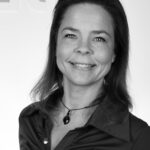Undesirable substances in seafood products – results from the Icelandic marine monitoring activities in the year 2012
Í þessari skýrslu eru teknar saman niðurstöður vöktunar á óæskilegum efnum í sjávarfangi, fiskimjöli og lýsi fyrir fóður frá árinu 2012. Hámarksgildi ESB fyrir díoxín og díoxínlík PCB (DL‐PCB) í matvælum og fóðri voru nýlega lækkuð ásamt því að hámarksgildi voru í fyrsta sinn sett fyrir „ekki díoxínlík“ PCB (NDL‐PCB). Nýju hámarksgildin eru notuð í þessari skýrslu til að meta hvernig íslenskar sjávarafurðir standast kröfur ESB. Vöktunin hófst árið 2003 fyrir tilstuðlan þáverandi Sjávarútvegsráðuneytis, núverandi Atvinnuvega‐ og nýsköpunar‐ ráðneytis, og hefur nú verið framkvæmt í tíu ár samfleytt. Verkefnið byggir upp þekkingargrunn um magn óæskilegra efna í efnahagslega mikilvægum tegundum og sjávarafurðum, það er skilgreint sem langtímaverkefni þar sem eftirlit og endurskoðun eru stöðugt nauðsynleg. Árið 2012 var áhersla lögð á að safna saman upplýsingum um lífrænu efnasamböndin PFC og ólífræn snefilefni í ætum hluta sjávarfangs, en einnig í fiskimjöli og lýsi fyrir fóður. Almennt voru niðurstöðurnar sem fengust 2012 í samræmi við fyrri niðurstöður frá árunum 2003 til 2011. Niðurstöðurnar sýndu að íslenskar sjávarafurðir innihalda óverulegt magn þrávirkra lífrænna efna s.s. díoxín, PCB, varnarefni og PBDE. Þetta var annað árið sem PFC eru greind í íslenskum sjávarafurðum og perfluorooctane sulfon amide (PFOSA) var eina PFC efnið sem var yfir greiningarmörkum, önnur PFC efni mældust ekki. Niðurstöðurnar frá árinu 2012 sýndu að þrátt fyrir breytingu á hámarksgildum fyrir díoxín, DL‐PCB og NDL‐PCB (ESB reglugerð nr. 1259/2011) eru öll sýni af sjávarafurðum til manneldis undir hámarksgildum ESB fyrir þrávirk lífræn efni og þungmálma. Þá reyndist styrkur viðmiðunar‐PCB efna (marker PCBs) vera í lágmarki í ætum hluta fisks, miðað við ný hámarksgildi ESB. Sömuleiðis sýndu niðurstöðurnar að styrkur þungmálma, t.d. kadmíum (Cd), blý (Pb) og kvikasilfur (Hg) í íslenskum sjávarafurðum var alltaf undir hámarksgildum ESB. Í mars 2012 tók gildi ESB reglugerð nr 277/2012 þar sem hámarksgildi fyrir díoxín og DL‐PCB í fóðri voru lækkuð, en einnig voru sett hámarksgildi fyrir NDL‐ PCB. Þrátt fyrir þessa breytingu voru öll sýni af fiskimjöli og lýsi fyrir fóður sem voru mæld undir hámarksgildum, fyrir utan eitt kolmunnamjölssýni sem innihélt toxafen yfir hámarksgildum ESB.
This report summarises the results obtained in 2012 for the screening of various undesirable substances in the edible part of marine catches, fish meal and fish oil for feed. The newly established maximum levels for dioxins, dioxin‐like PCB and non dioxin‐like PCB in foodstuffs and animal feed are used to evaluate how Icelandic seafood products measure up to EC limits currently in effect. The surveillance program began in 2003 and has now been carried out for ten consecutive years. The project fills in gaps of knowledge regarding the level of undesirable substances in economically important marine catches for Icelandic export. It is considered to be a long‐term project where extension and revision are constantly necessary. In the year 2012 emphasis was laid on gathering information on the organic compounds PFCs and inorganic trace elements in the edible part of marine catches as well as in the fish meal and fish oil for feed. Generally, the results obtained in 2012 are in agreement with previous results from the years 2003 to 2011. The results show that the Icelandic seafood products contain negligible amounts of persistent organic pollutants (POPs) such as dioxins, dioxin like PCBs, pesticides and PBDEs. This is the second time PFCs are analysed in Icelandic seafood and fish products and the results show that the main PFC compound, perfluorooctane sulfone amide (PFOSA) was the only congener detected. The results obtained in the year 2012 reveal that despite of the recent change by the EC in maximum levels for dioxins, dioxin‐like PCB and non dioxin‐like PCB in foodstuffs, all samples of seafood for human consumption were below EC maximum levels for POPs and heavy metals. Furthermore, the concentration of marker PCBs was found to be low in the edible part of fish muscle, compared to the maximum limits set by the EU (Commission Regulation 1259/2011). The results showed that the concentrations of heavy metals, e.g. cadmium (Cd), lead (Pb) and mercury (Hg) in Icelandic seafood products was always well below the maximum limits set by EU. In March 2012 Commission Regulation No 277/2012, regarding maximum levels for dioxins and PCB in animal feed came into effect and after the implementation of this regulation maximum levels are now also set for non dioxin‐like PCB. Despite of this change all samples of fish meal and fish oil for feed measured were below the EC maximum limits for feed components of marine origin except for one blue whiting meal sample that exceeds the maximum limits for toxaphene.

